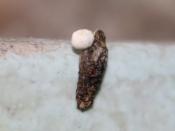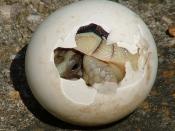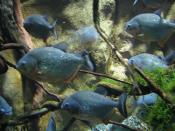This essay is for my AP-BIO class from actual AP-Biology test none
AP-Biology Essay on vertebrate structural adaptations for terrestrial life. (From an actual past AP-BIOLOGY test)
The problems of survival of animals on land are very different from those of survival of animals in aquatic environment. Describe four problems associated with animal survival in terrestrial environments but not in aquatic environments. For each problem, explain a physiological of structural solution.
Four problems faced by animals on land are breathing (respiration), water conservation in excretions, successful reproduction, and the producing an egg which can survive outside of the water.
All animals need to respire, but I have no idea why. Maybe you would like to answer that? Aquatic animals use gills, which are outgrowths from the body which increase surface area over which gas exchange can occur. Inside the gills of aquatic animals, the circulatory system removes oxygen, and delivers waste carbon dioxide.
Land vertebrates have developed a different approach to the problem of gas exchange, as water is not present in all of the terrestrial environment. Terrestrial vertebrates have developed lungs to solve this problem. Air enters through the nasal passages, or the mouth, passes through the trachea, then branches off at the two bronchi, and goes through many branching passages called bronchioles, which end in alveoli. Alveoli are sack-like structures where the circulatory system meets the respiratory system.
Since terrestrial vertebrates do not live in water, they need to develop a means of conserving water. One way we do this is through our excretions. Nitrogen forms a major waste product in animals. When amino acids and nucleic acids are broken down, they release toxic ammonia (NH3). To rid the body of this toxin, several mechanisms have evolved, each appropriate to the habitat or survival of the...


